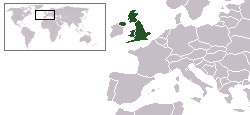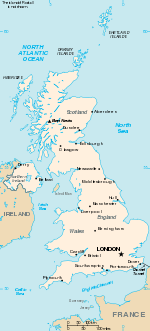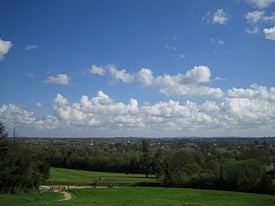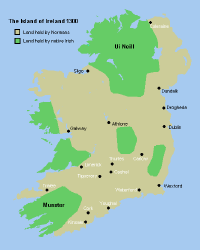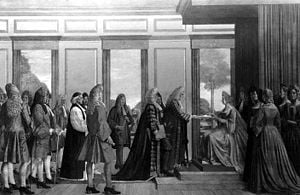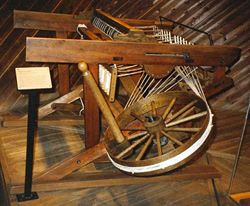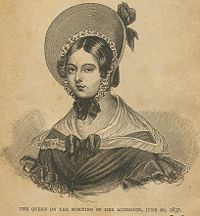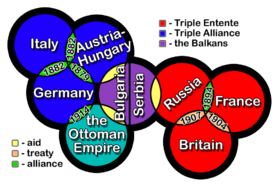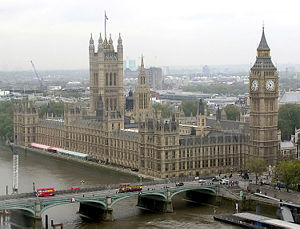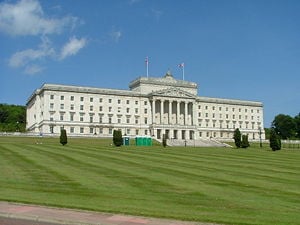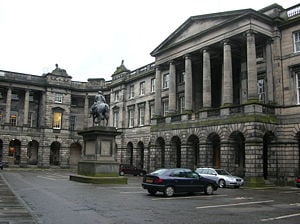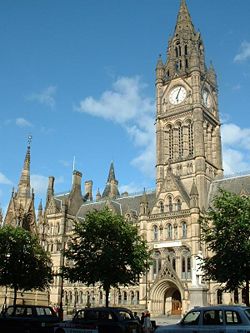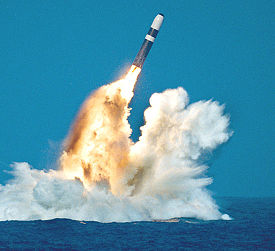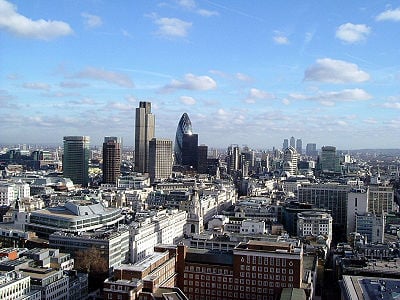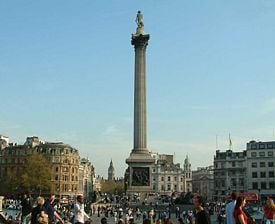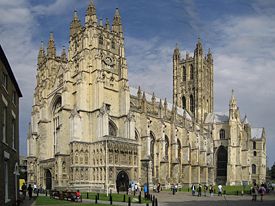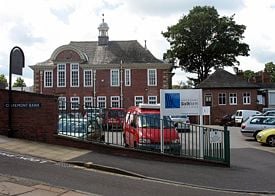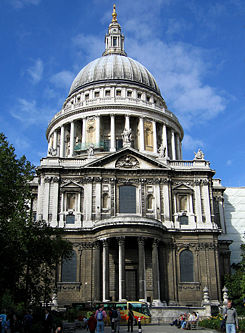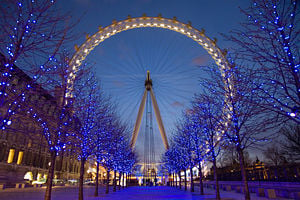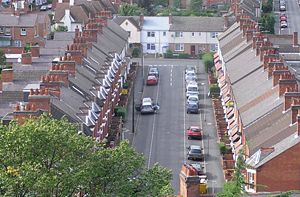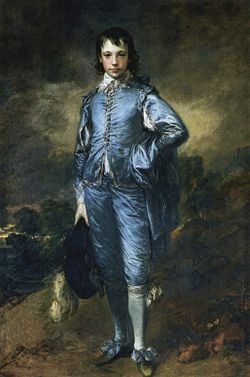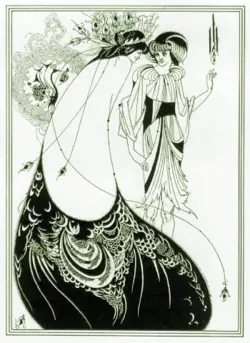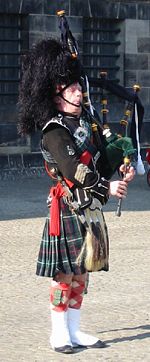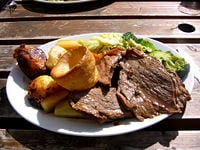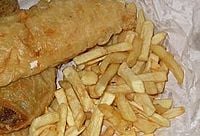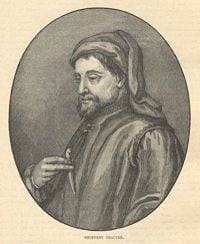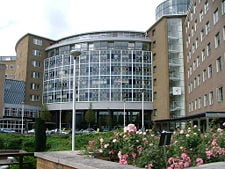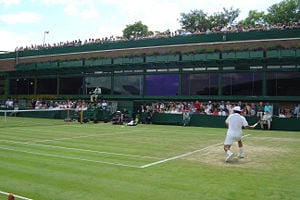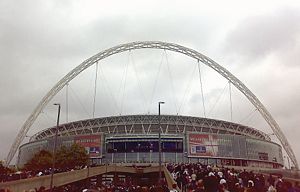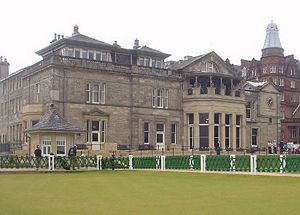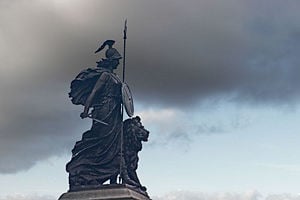United Kingdom
| United Kingdom of Great Britain and Northern Ireland1 |
||||||
|---|---|---|---|---|---|---|
|
||||||
| Motto: Dieu et mon droit (the Royal motto3) (French for "God and my right") |
||||||
| Anthem: God Save the Queen 4 |
||||||
| Capital | London | |||||
| Largest Most populous conurbation | Greater London Urban Area | |||||
| Official languages | English (de facto5) | |||||
| Government | Constitutional monarchy | |||||
| - | Queen | HM Queen Elizabeth II | ||||
| - | Prime Minister | The Rt Hon Gordon Brown MP (Labour) | ||||
| Formation | ||||||
| - | Union of the Crowns | 24 March 1603 | ||||
| - | Acts of Union | 1 May 1707 | ||||
| - | Act of Union | 1 January 1801 | ||||
| - | Anglo-Irish Treaty | 12 April 1922 | ||||
| EU accession | 1 January 1973 | |||||
| Area | ||||||
| - | Total | 244,820 km² (79th) 94,526 sq mi |
||||
| - | Water (%) | 1.34 | ||||
| Population | ||||||
| - | 2005 estimate | 60,209,5006 (21st) | ||||
| - | 2001 census | 58,789,194 | ||||
| GDP (PPP) | 2005 estimate | |||||
| - | Total | $1.833 trillion (6th) | ||||
| - | Per capita | $30,436 (18th) | ||||
| GDP (nominal) | 2005 estimate | |||||
| - | Total | $2.201 trillion (5th) | ||||
| - | Per capita | $37,023 (13th) | ||||
| Currency | Pound sterling (£) (GBP) |
|||||
| Time zone | GMT (UTC+0) | |||||
| - | Summer (DST) | BST (UTC+1) | ||||
| Internet TLD | .uk7 | |||||
| Calling code | +44 | |||||
| 1 In the UK, some other languages have been officially recognised as legitimate autochthonous (regional) languages under the European Charter for Regional or Minority Languages. In each of these, the UK's official name is as follows: Welsh: Teyrnas Unedig Prydain Fawr a Gogledd Iwerddon Scottish Gaelic: An Rìoghachd Aonaichte na Breatainn Mhòr agus Eirinn a Tuath Irish: Ríocht Aontaithe na Breataine Móire agus Thuaisceart Éireann Scots: Unitit Kinrick o Great Breetain an Northren Ireland Cornish: An Rywvaneth Unys a Vreten Veur hag Iwerdhon Glédh 2 There is also a variant for use in Scotland; see Royal coat of arms of the United Kingdom. 3 The Royal motto used in Scotland is Nemo Me Impune Lacessit (Latin: "No-one provokes me with impunity"). 4 See #Symbols below. It also serves as the Royal anthem. 5 In addition to English (use established by precedent), Welsh is recognized in Wales as a "language of equal standing". Since 2005, Scottish Gaelic in Scotland has the status of "an official language of Scotland commanding equal respect to the English language" [1]. See also Languages in the United Kingdom. 6 Official estimate provided by the UK Office for National Statistics [2]. 7 ISO 3166-1 alpha-2 is GB, but .gb is unused. The .eu domain is also shared with other European Union member states. |
||||||
The United Kingdom of Great Britain and Northern Ireland (commonly known as the United Kingdom, the UK, or Britain) is a state located off the northwestern coast of mainland Europe. It comprises the island of Great Britain, the north-east part of the island of Ireland and many small islands. Northern Ireland is the only part of the UK with a land border, sharing it with the Republic of Ireland which became independent in 1922. Apart from this land border, the UK is surrounded by the Atlantic Ocean, the North Sea, the English Channel and the Irish Sea.
The United Kingdom is a parliamentary democracy and a constitutional monarchy comprising four constituent countries — England, Scotland, Wales and Northern Ireland — with Queen Elizabeth II as head of state. She is also head of state of sixteen Commonwealth realms that are members of the Commonwealth of nations of which she is also the head. The Crown Dependencies of the Channel Islands and the Isle of Man, are possessions of the Crown and have a federal relationship with the UK. The UK has fourteen overseas territories which are remnants of the British Empire, which at its height encompassed almost a quarter of the world's land surface. It is a developed country, with the fifth-largest economy in the world by nominal GDP.
Britain was the world's foremost power during the 19th and early 20th century,[1] but the economic cost of two world wars and the decline of its empire in the latter half of the 20th century diminished its leading role in global affairs. The UK nevertheless retains major economic, cultural, military and political influence today and is a nuclear power, with the second highest defence spending in the world. It holds a permanent seat on the United Nations Security Council, and is a member of the G8, NATO, the European Union and the Commonwealth of Nations.
There is no separation of church and state in the UK. The monarch is not only the head of state but also the Supreme Governor of the Church of England, which is the established church, and is crowned by the Archbishop of Canterbury. Anglican Bishops sit in the House of Lords as of right. The UK also has a tradition of religious toleration which has developed over the past four hundred years. It is very common to find Anglican, Catholic and non-conformist churches on the same street. Jews have been allowed to live and practice their religion freely in Britain for 350 years. In the last thirty years large communities of Muslims, Sikhs and Hindus have been established as a result of immigration.
The United Kingdom is an interesting model for people concerned with promoting peace and cooperation. The basis of the union is not uniformity but loyalty to the reigning monarch. When England and Scotland united in 1705, Scotland as the junior partner continued to maintain its own separate judicial and legal system based on Scots Law which quite different to English Common Law; it kept its own church - the Presbyterian Church of Scotland; it's school and university system have remained different and under Scottish control; and it kept its own currency issued by its own banks; and it has its own administration so that very few statistics are collected for the UK as a whole. Scotland is free to leave the United Kingdom if the people vote for independence in a referendum. The United Kingdom also has affiliated to it several islands - such as the Channel Islands and Isle of Man which have their own parliaments, laws, currencies, stamps, passports and rules of residence. The relationships that Britain had with its colonies were also characterized by their diversity each tailored to suit the particular colony, its history and demography. The liberality with which Britain ruled its empire has meant that most of its former colonies still value their association with the mother country and have formed a Commonwealth, the largest association of democracies in the world.
The history of the formation of the UK is quite complicated. The relationships among its constituent parts has changed many times. The principality of Wales was joined to England in 1536 forming the Kingdom of England and Wales. In 1707 Scotland and England were united to form the Kingdom of Great Britain. In 1801 the Irish and British Parliaments were combined to form the United Kingdom of Great Britain and Ireland. In 1922 twenty six counties left the UK to form the Irish Free State leaving the present formulation of the United Kingdom of Great Britain and Northern Ireland. It is possible that in the future Northern Ireland will join the Republic of Ireland while Scotland may become independent once more.
Geography
Located primarily on the island of Great Britain and in Northern Ireland, the United Kingdom is bounded by the Atlantic Ocean, the North Sea, the English Channel, the Celtic Sea and the Irish Sea. The mainland is linked to France by the Channel Tunnel and Northern Ireland shares a land border with the Republic of Ireland. It is estimated that the UK is made up of over 1000 small islands.
With a land area of 94,526 square miles (244,820 square kilometers), the United Kingdom is slightly smaller than Oregon in the United States. The greatest distance between two points on the UK mainland of Great Britain is 840 miles (1,350 km) between Land's End in Cornwall (near Penzance) and John O'Groats in Caithness (near Thurso), a two day journey by car. When measured directly north-south it is a little over 700 miles (1,100 km) in length and is a fraction under 300 miles (500 km) at its widest.
Most of England consists of rolling lowland terrain, with some mountainous terrain in the northwest (Cambrian Mountains of the Lake District) and north (the upland moors of the Pennines) and limestone hills of the Peak District.
Scotland's geography is varied, with lowlands in the south and east and highlands in the north and west, including Ben Nevis, the highest mountain in the British Isles at 4,409 ft (1,344 meters). There are many long and deep-sea arms, firths, and lochs. Scotland has nearly 800 islands, mainly west and north of the mainland, notably the Hebrides, Orkney Islands and Shetland Islands.
Wales (Cymru in Welsh) is mostly mountainous, the highest peak being Snowdon (Yr Wyddfa) at 3560 feet (1085 meters) above sea level. North of the mainland is the island of Anglesey (Ynys Môn). Northern Ireland, making up the north-eastern part of Ireland, is mostly hilly.
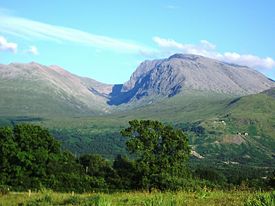
The climate is generally temperate, though significantly warmer than some other locations at similar latitude, such as central Poland, due to the warming influence of the Gulf Stream. The south is warmer and drier than the north.
The prevailing winds are south-westerly, from the North Atlantic Current. More than 50 percent of the days are overcast. There can be strong winds and floods, especially in winter.
Average annual rainfall varies from over 120 inches (3000 millimeters) in the Scottish Highlands down to 21.8 inches (553mm) in Cambridge. The county of Essex is one of the driest in the UK, with an average annual rainfall of around 24 inches (600mm) although it typically rains on over 100 days per year.
The highest temperature recorded in the UK was 101.3°F (38.5°C) at Brogdale, near Faversham, in the county of Kent, on August 10, 2003. The lowest was -17.0°F (27.2°C) recorded at Braemar in the Grampian Mountains, Scotland, on February 11, 1895.
The longest river is the River Severn, at 220 miles (354km), which flows through both Wales and England. The largest lakes are: Lough Neagh in Northern Ireland (147.39 square miles), Loch Lomond in Scotland (27.46 square miles), Lake Windermere in England (5.69 square miles) and 14.74 km²), and Lake Vyrnwy in Wales 3.18 square miles.
The United Kingdom has an extensive system of canals, mostly built in the early years of the Industrial Revolution, before railways were built. There are numerous dams and water reservoirs to store water for drinking and industry. The generation of hydroelectric power is rather limited, supplying less than two percent of British electricity, mainly from the Scottish Highlands.
Originally, oak forests covered the lowlands, while pine forests and patches of moorland covered the higher or sandy ground. Most of the forests have been cleared for cultivation, fuel, construction and ship building so that by 2007, only about 9 percent of the total surface is wooded—in east and north of Scotland and in southeast England. Oak, ash and beech are the most common trees in England, while pine and birch are predominate in Scotland. Heather, grasses, gorse, and bracken are found on the moorlands.
Wolves, bears, boars, and reindeer are extinct, but red and roe deer are protected for sport. Foxes, hares, hedgehogs, rabbits, weasels, stoats, badgers, shrews, rats and mice are common, otters are found in many rivers, and seals appear along the coast. The chaffinch, blackbird, sparrow, and starling are the most numerous of the 230 species of birds there, and another 200 are migratory. Game birds—pheasants, partridges, and red grouse—are protected. The rivers and lakes contain salmon, trout, perch, pike, roach, dace, and grayling.
Agriculture is intensive, highly mechanized, and efficient by European standards, producing about 60 percent of food needs with only one percent of the labor force. It contributes around two percent of GDP. Around two thirds of production is devoted to livestock, and one third to arable crops.
The UK has large reserves of coal, natural gas, and oil, as well as limestone, chalk, gypsum, silica, rock salt, china clay, iron ore, tin, silver, gold and lead. There is a lot of good quality arable land.
The United Kingdom is reducing greenhouse gas emissions. It has met Kyoto Protocol target of a 12.5 percent reduction from 1990 levels and intends to meet the legally binding target of a 20 percent cut in emissions by 2010. Between 1998-1999 and 1999-2000, household recycling increased from 8.8 percent to 10.3 percent.
London is the capital city of England and the United Kingdom. It is made up of two cities: the ancient City of London which is the financial capital still enclosed by its tiny mediaeval boundaries; and the City of Westminster, which is much larger and is the political capital. London, with a population of 7.7 million, is one of the world's leading business, financial and cultural centers, and its influence in politics, education, entertainment, media, fashion and the arts all contribute to its status as one of the major global cities
Edinburgh, with a population of 448,624 in 2001, is the capital of Scotland, Cardiff, with a population of 380,000 in 2007, is the capital of Wales, and Belfast, with a population of 579,554 in 2001, is the capital of Northern Ireland.
History of the formation of the United Kingdom
| Personal and legislative unions of the constituent countries of the United Kingdom |
|---|
The history of the constituent countries before the UK can be found under England, Scotland, Wales, Ireland and Northern Ireland. Earlier periods can be found in the article The British Isles
England's conquest of Wales
The Romans partially occupied Wales and built a series of fortresses across the country. After the Roman withdrawal from Britain in 410, much of the lowlands were overrun by various Germanic tribes. However, Gwynedd, Powys, Dyfed and Seisyllg, Morgannwg, and Gwent emerged as independent Welsh successor states. They endured, in part because of favorable geographical features such as uplands, mountains, and rivers and a resilient society that did not collapse with the end of the Roman civitas. This tenacious survival by the Romano-Britons and their descendants in the western kingdoms was to become the foundation of what is now known as Wales. With the loss of the lowlands, England's kingdoms of Mercia and Northumbria, and later Wessex, wrestled with Powys, Gwent, and Gwynedd to define the frontier between the two peoples.
Having lost much of the West Midlands to Mercia in the 6th and early 7th century, a resurgent late 7th century Powys checked Mercian advancement. Aethelbald of Mercia, looking to defend recently acquired lands built Wat's Dyke. King Offa of Mercia (757-796) created a larger earth work, now known as Offa's Dyke, as a defence against attacks or raids from Powys.
Offa's Dyke largely remained the frontier between the Welsh and English, though the Welsh would recover by the 12th century the area between the Dee and the Conwy known then as the Perfeddwlad. By the eighth century the eastern borders with the Anglo-Saxons had broadly been set. In 878 and again in 1063 the Welsh formed an alliance with the Vikings to prevent further Mercian encroachments.
Through internal struggles and dynastic marriages alliances the Welsh became more united. Owain Gwynedd (1100-1170) was the first Welsh ruler to use the title princeps Wallensium (prince of the Welsh). When the land-hungry Normans invaded England, they started pushing into the relatively weak Welsh Marches, setting up a number of lordships in the Eastern part of the country and the border areas. In response, the usually fractious Welsh, who still retained control of the north and west of Wales, started to unite around leaders such as Owain Gwynedd's grandson Llywelyn the Great, (1173– 1240) who is known to have described himself as "prince of all North Wales" by 1199.[2] Owain Gwynedd's grandson Llywelyn the Great (the Great) (b.1173-1240), wrestled concessions out of the Magna Carta in 1215 and received the fealty of other Welsh lords in 1216 at the council at Aberdyfi, becoming the first Prince of Wales. His grandson Llywelyn the Last also secured the recognition of the title Prince of Wales from Henry III with the Treaty of Montgomery in 1267. However, a succession of disputes, including the imprisonment of Llywelyn's wife Eleanor, daughter of Simon de Montfort, culminated in the first invasion by Edward I. After a military defeat, the Treaty of Aberconwy imposed English fealty over Llywelyn in 1277.
In 1282, King Edward I of England (1272–1307) finally conquered the last remaining native Welsh principalities in north and west Wales[3] (an area roughly corresponding to the present day counties of Anglesey, Caernarfonshire, Merionethshire, Ceredigion and Carmarthenshire). The Statute of Rhuddlan formally established Edward's rule over Wales two years later although Welsh law continued to be used. To appease the Welsh, Edward's son (later Edward II), who had been born in Wales, was made Prince of Wales on 7 February 1301. Wales therefore took the status of Principality, which it held officially between 1284 and 1536. The tradition of bestowing the style 'Prince of Wales' on the heir of the British Monarch continues to the present day. To help maintain his dominance, Edward constructed a series of great stone castles. Beaumaris, Caernarfon, and Conwy were built mainly to overshadow the Welsh royal home and headquarters Garth Celyn, Aber Garth Celyn, on the north coast of Gwynedd.
Between 1284 and 1536, the Crown only had indirect control over the principality, as the Marcher lords (ruling over independent lordships in the east and south of Wales) were independent from direct Crown control. There was no major uprising except that led by Owen Glendower a century later, against Henry IV of England. In 1404 Glendower was reputedly crowned Prince of Wales in the presence of emissaries from France, Spain and Scotland; he went on to hold parliamentary assemblies at several Welsh towns, including Machynlleth. The rebellion was ultimately to founder, however, and Owen went into hiding in 1412 and peace was more or less restored in Wales by 1415. The power of the Marcher lords was ended in 1535, when the political and administrative union of England and Wales was completed. The Laws in Wales Act 1535 annexed Wales to the legal system of England, and partitioned the Marches into the counties of Brecon, Denbigh, Monmouth, Montgomery and Radnor while adding parts to Gloucester, Hereford and Salop. (The subsequent Laws in Wales Act of 1542 made no mention of Monmouthshire, which has led to ambiguity about its status as part of England or Wales.) The Act also extended the Law of England to both England and Wales, and made English the only permissible language for official purposes. This excluded most native Welsh people from formal office. Wales was also now represented in Parliament at Westminster. Wales remains the largest principality in the world.
The English conquest of Ireland
By the 12th century, Ireland was divided. Power was exercised by the heads of a few regional dynasties vying with each other for supremacy over the whole island. In 1155 by Pope Adrian IV issued the papal bull Laudabiliter giving the Norman King Henry II of England lordship over Ireland. The bull granted Henry the right to invade Ireland in order to reform Church practices. When the King of Leinster Diarmuid MacMorroug was forcibly exiled from his kingdom by the new High King, Ruaidri mac Tairrdelbach Ua Conchobair, he obtained permission from Henry II of England to use Norman forces to regain his kingdom. The Normans landed in Ireland in 1169 and within a short time Leinster was reclaimed by Diarmait, who named his son-in-law, Richard de Clare, heir to his kingdom. This caused consternation to Henry, who feared the establishment of a rival Norman state in Ireland.
With the authority of the papal bull Henry landed with a large fleet in 1171 and claimed sovereignty over the island. A peace treaty followed in 1175, with the Irish High King keeping lands outside Leinster, which had passed to Henry on the expected death of both Diarmait and de Clare. When the High King lost his authority Henry awarded his Irish territories to his younger son John with the title Dominus Hiberniae ("Lord of Ireland") in 1185. When John unexpectedly became King of England, the Lordship of Ireland fell directly under the English Crown. The title of Lord of Ireland and King of England fell into personal union. Throughout the thirteenth century the policy of the English Kings was to weaken the power of the Norman Lords in Ireland.
There was a resurgence of Gaelic power as rebellious attacks stretched Norman resources. Politics and events in Gaelic Ireland also served to draw the settlers deeper into the orbit of the Irish. When the Black Death arrived in Ireland in 1348 it hit the English and Norman inhabitants who lived in towns and villages far harder than it did the native Irish, who lived in more dispersed rural settlements. After it had passed, Gaelic Irish language and customs came to dominate the countryside again. The English-controlled area shrunk back to the Pale, a fortified area around Dublin.
Outside the Pale, the Hiberno-Norman lords adopted the Irish language and customs. Over the following centuries they sided with the indigenous Irish in political and military conflicts with England and generally stayed Catholic after the Reformation. The authorities in the Pale grew so worried about the "Gaelicisation" of Ireland that they passed special legislation banning those of English descent from speaking the Irish language, wearing Irish clothes or inter-marrying with the Irish. Since the government in Dublin had little real authority, however, the Statutes did not have much effect. By the end of the 15th century, central English authority in Ireland had all but disappeared.
In 1532, Henry VIII broke with Papal authority. While the English, the Welsh and Scots accepted Protestantism, the Irish remained Catholic. This affected Ireland's relationship with England for the next four hundred years, as the English tried to re-conquer and colonise Ireland to prevent Ireland being a base for Catholic forces that were trying to overthrow the Protestant settlement in England.
In 1536, Henry VIII decided to re-conquer Ireland and bring it under Crown control so the island would not become a base for future rebellions or foreign invasions of England. In 1541, he upgraded Ireland from a lordship to a full kingdom. Henry was proclaimed King of Ireland at a meeting of the Irish Parliament. With the institutions of government in place, the next step was to extend the control of the English Kingdom of Ireland over all of its claimed territory. The re-conquest was completed during the reigns of Elizabeth and James I, after several bloody conflicts. However, the English were not successful in converting the Catholic Irish to the Protestant religion and the brutal methods used by Crown authority to pacify the country heightened resentment of English rule.
From the mid-16th and into the early 17th century, Crown governments carried out a policy of colonisation known as Plantations. Scottish and English Protestants were sent as colonists to the provinces of Munster, Ulster and the counties of Laois and Offaly. These settlers, who had a British and Protestant identity, would form the ruling class of future British administrations in Ireland. A series of Penal Laws discriminated against all faiths other than the established (Anglican) Church of Ireland.
The long struggle to unite the English and Scottish Crowns
The middle ages was a time for the consolidation and expansion of Gaelic culture and the gradual establishment of unity in the land that came to be known as Scotland. After the Norman Conquest King Malcolm III, who was married to the grand-daughter of Edmund Ironside, raided England to further claims for his successors to the English kingdom. In 1080, William the Conqueror's son invaded Scotland. Malcolm submitted to the authority of the king and gave his oldest son Donnchad as a hostage. After Malcolm was killed, Donnchad obtained Rufus support to take the throne. However he too was killed and so in 1097, William Rufus sent another one of Malcolm's sons, Edgar, to take the kingship. After this Norman influence gradually grew in the Scottish court.
David I (1124-1153) became king with the support of Henry I of England. He introduced Norman reforms into government and the church along with the French language, social values and feudalism through the immigration of French and Anglo-French knights. At the same time Scotland's kings became increasingly ambivalent about the culture of most of their subjects. As Walter of Coventry tells us, "the modern kings of Scotland count themselves as Frenchmen, in race, manners, language and culture; they keep only Frenchmen in their household and following, and have reduced the Scots (Gaels) to utter servitude."[4] This ambivalence was reciprocated by the Scots who would frequently rebel against the Anglo-French establishment.
King Alexander III of Scotland died in 1286, leaving Margaret as his heir. It was agreed at the Treaty of Birgham that she would marry the future Edward II of England. This marriage would create a union between Scotland and England. The Scots insisted that the Treaty declare that Scotland was separate and divided from England and that its rights, laws, liberties and customs were wholly and inviolably preserved for all time. However, Margaret died leaving 14 rivals for the succession. The two leading claimants were Robert Bruce, 5th Lord of Annandale (grandfather of the future King Robert the Bruce) and John Balliol, Lord of Galloway. Fearing civil war Edward I of England was invited to arbitrate between the claimants. Edward agreed to do so but only if he was recognised as senior king of the British Isles and Lord Paramount of Scotland. The claimants to the crown agreed to this. The leading Scottish nobles swore allegiance to King Edward I as Lord Paramount. All Scots were also required to pay homage to Edward I. At the arbitration John Balliol was named king by a majority and crowned King of Scots. He then swore homage to Edward I for the Kingdom of Scotland. Edward soon made it clear that he regarded the Scotland as a vassal state. The Scots resented Edward's demands.
In 1294, Edward ordered John to provide Scottish troops and funds for his invasion of France. John and his council decided to defy Edward. They negotiated a mutual support treaty with King Philip IV of France. The Franco-Scottish alliance, later known as the Auld Alliance, was renewed frequently until 1560 when Scotland became Protestant. When Edward I found out about the secret Franco-Scottish negotiations he invaded Scotland in 1296, defeated the Scots at the Battle of Dunbar after which the Scottish nobles paid homage to him as King of England. The following year revolts broke out led by William Wallace resulting a Scottish victory, at Stirling Bridge. Edward invaded again and there was continual fighting until he died in 1307. The same year Robert the Bruce became king and defeated Edward II at the Battle of Bannockburn in 1314.
In 1320, the Declaration of Arbroath was sent by a group of Scottish nobles to the Pope affirming Scottish independence from England. In 1327, Edward II of England was deposed and killed. The invasion of the north of England by Robert the Bruce forced Edward III of England to sign the Treaty of Edinburgh-Northampton on May 1, 1328 which recognised the independence of Scotland with Bruce as its king. To further seal the peace, Robert's son and heir David married the sister of Edward III.
After Robert died England and Scotland invaded each other again on several occasions, with England usually winning. Over the next two hundred years there were frequent wars as Scotland supported France during the Hundred Years War.

In 1543 Henry VIII tried to betroth his son Edward to the future Mary, Queen of Scots but was rebuffed. When Mary married she had one son James. Queen Elizabeth I of England did not marry and did not have a child. Mary, Queen of Scots as her cousin was next in line to the throne. However the Scottish Reformation led by John Knox contributed to the overthrow of the Catholic Mary who fled to England where she was later executed. Her son who became King James VI of Scotland was brought up as a Protestant. He was next in line to the English throne. Scotland also broke its alliance with Catholic France and grew closer to Protestant England.
From 1601, during the last years of Elizabeth I's life, her chief minister Sir Robert Cecil, maintained a secret correspondence with James in order to prepare in advance for a smooth succession. Elizabeth died on March, 24 1603 and James was proclaimed king in London later the same day. As James headed south, his new subjects flocked to see him, relieved above all that the succession had triggered neither unrest nor invasion. When he entered London, he was cheered and crowned King James I of England, Ireland and France.
James had the idealistic ambition of building on the personal union of the crowns of Scotland and England so as to establish a permanent Union of the Crowns under one monarch, one parliament and one law. He insisted that English and Scot should "join and coalesce together in a sincere and perfect union, as two twins bred in one belly, to love one another as no more two but one estate". James' ambitions were greeted with very little enthusiasm, as one by one MPs rushed to defend the ancient name and realm of England. All sorts of legal objections were raised: all laws would have to be renewed and all treaties renegotiated. For James, whose experience of parliaments was limited to the stage-managed and semi-feudal Scottish variety, the self-assurance — and obduracy — of the English version, which had long experience of upsetting monarchs, was an obvious shock. The Scots were no happier as they did not want to be reduced to the status of Wales or Ireland. In October 1604, he assumed the title "King of Great Britain" by proclamation rather than statute, though Sir Francis Bacon told him he could not use the style in "any legal proceeding, instrument or assurance". The two realms continued to maintain separate parliaments. The Union of the Crowns had begun the eventual unification of the two kingdoms. However, in the ensuing 100 years, strong religious and political differences continued to divide the kingdoms, and common royalty could not prevent occasions of internecine warfare.
James did not create a British Crown but he did, in one sense at least, create the British as a distinct group of people. In 1607 large tracts of land in Ulster fell to the crown. A new Plantation was started, made up of Protestant settlers from Scotland and England. Over the years the settlers, surrounded by the hostile Catholic Irish, gradually cast off their separate English and Scottish roots, becoming British in the process, as a means of emphasising their 'otherness' from their Gaelic neighbors. It was the one corner of the United Kingdom where Britishness became truly meaningful as a political and cultural identity in its own right, as opposed to a gloss on older and deeper national associations.
Two Isles: Three Kingdoms
Ruling over diverse kingdoms of England, Scotland and Ireland proved difficult for James and his successor Charles I of England, particularly when they tried to impose religious uniformity on the Three Kingdoms. There were different religious conditions in each country. King Henry VIII had made himself head of the Church of England which was reformed under Edward IV and became Anglican under Elizabeth I. Protestantism became intimately associated with national identity in England. Roman Catholicism was seen as the national enemy, especially as embodied in France and Spain. However, Catholicism remained the religion of most people in Ireland and became a symbol of native resistance to the Tudor re-conquest of Ireland in the 16th century. Scotland had a national Presbyterian church, the Presbyterian Church of Scotland although much of the highlands remained Catholic. With the support of the Episcopalians James reintroduced bishops into the Church of Scotland against the wishes of the presbyterian party.
In 1625, James was succeeded by his son Charles I He was also crowned in St Giles Cathedral, Edinburgh, in 1633 with full Anglican rites. Opposition to his attempts to enforce Anglican practices reached a flashpoint when he tried to introduce a Book of Common Prayer. Charles' confrontation with the Scots came to a head in 1639, when Charles tried and failed to coerce Scotland by military means. In some respects, this revolt also represented Scottish resentment at being sidelined within the Stuart monarchy after James I's accession to the throne of England. It led to the Bishop's Wars.
Charles I's accession also marked the beginning of an intense schism between King and Parliament. Charles's adherence to the doctrine of the Divine Right of Kings, a doctrine foreign to the English mentality which he had inherited from his father, fuelled a vicious battle for supremacy between king and Parliament. The crisis culminated in the English Civil War (1642–49) which saw Charles's execution and ushered in a period of rule as a parliamentary Commonwealth (1649–53) followed by a period of personal rule under the Parliamentarian veteran Oliver Cromwell as Lord Protector. The new regime remained unpopular, however, and Cromwell's death left a political void. Parliament negotiated the restoration of the monarchy in the person of Charles's son, Charles II. The period from the earliest crises between Charles I and Parliament in the 1620s until the Restoration in 1660 is now increasingly referred to by historians as the English Revolution.
The Commonwealth period also saw Ireland and Scotland annexed by England and their legislative autonomy abolished. Ireland in particular was permanently altered by the civil war period, as its native Irish Catholic landowning class was dispossessed after the Cromwellian conquest and replaced with a British Protestant ruling class. Both Ireland and Scotland had their nominal autonomy from London restored after the Restoration. Nevertheless, the era of the Wars of the Three Kingdoms went a long way towards establishing English primacy over the other two Kingdoms in the Stuart monarchy.
Acts of Union 1707
Deeper political integration was a key policy of Queen Anne, (1702–14), who succeeded to the throne in 1702 as the last Stuart monarch of England and Scotland (she became the only Stuart monarch of Great Britain). Under the aegis of the Queen and her advisors a Bill of Union was drawn up and in 1706 negotiations between England and Scotland began in earnest. The circumstances of Scotland's acceptance of the Bill are to some degree disputed. Scottish proponents believed that failure to accede to the Bill would result in the imposition of Union under less favourable terms and months of fierce debate on both sides of the border were to follow, particularly in Scotland where debate could often dissolve into civil disorder, most notably by the notorious 'Edinburgh Mob'. The prospect of a Union of the kingdoms was deeply unpopular among the Scottish population at large, however following the financially disastrous Darien Scheme, the near-bankrupt Parliament of Scotland did, albeit reluctantly, accept the proposals. (The small matter of financial incentives to Scots parliamentarians and English army maneuvers in the North of England also playing their part in the decision).
In 1707, the Acts of Union received their Royal assent, thereby abolishing the Parliament of the Kingdom England and Parliament of the Kingdom of Scotland to create a unified Kingdom of Great Britain with a single Parliament of Great Britain. Anne became formally the first occupant of the unified British throne and Scotland sent 45 MPs to the new parliament at Westminster. Perhaps the greatest single benefit to Scotland of the Union was that Scotland could enjoy free trade with England and her colonies overseas. For England's part, a possible ally for European states hostile to England had been neutralised while simultaneously securing a Protestant succession to the British throne.
However, certain aspect of the former independent kingdoms remained separate. Examples of Scottish and English institutions which were not merged into the British system include: Scottish and English law which remain separate, as do Scottish and English banking systems, the Presbyterian Church of Scotland and Anglican Church of England also remained separate as did the systems of education and higher learning. However, one particular provision of the Acts of Union, the renaming of Scotland and England as 'North Britain' and 'South Britain' respectively, failed to take hold and fell into disuse fairly quickly. (In England however, the terms 'England' and 'Britain' often continue to be used interchangeably. A situation not repeated in Scotland however).
History of the United Kingdom
Under the Acts of Union 1707, England (including Wales) and Scotland, which had been in personal union since the Union of the Crowns in 1603, agreed to a political union in the form of a unified Kingdom of Great Britain. The Act of Union 1800 united the Kingdom of Great Britain with the Kingdom of Ireland, which had been gradually brought under English control between 1541 and 1691, to form the United Kingdom of Great Britain and Ireland in 1801.
Since 1707 England, while ceasing to exist as an independent political entity, has remained highly dominant in what is now the United Kingdom of Great Britain and Northern Ireland. Due to her geographic size and large population, the dominant political and economic influence in the UK stems from England. London has remained the capital city of the UK and has built upon its status as the economic and political centre of the UK. It is also one of the world's great cities.
Enlightenment Britain
Britain was an important part of the Age of Enlightenment with philosophical and scientific input and a literary and theatrical tradition. Over the next century the United Kingdom played an important role in developing Western ideas of parliamentary democracy, partly via the emergence of a multi-party system, as evidenced in the rise of the Whig and Tory political parties. There were significant contributions to literature, the arts and science. But, like other Great Powers, the UK was involved in colonial exploitation, including the infamous Atlantic slave trade, until the passing of the 1807 Slave Trade Act made the UK the first nation to permanently prohibit trade in slaves.
Confidence in the rule of law, which followed establishment of the prototype of constitutional monarchy in Britain in the Glorious Revolution of 1688, and the emergence of a stable financial market there based on the management of the national debt by the Bank of England, contributed to the capacity for, and interest in, private financial investment in industrial ventures. In addition, Britain had an entrepreneurial class which believed in progress, technology and hard work. This Protestant work ethic has been regarded as one of the cornerstones of national prosperity.
The British Empire
After the defeat of Napoleon Bonaparte (1769-1821) in the Napoleonic Wars (1804-1815), Britain became the principal naval power of the nineteenth century. At its peak, the British Empire was the largest empire in history and for a substantial time was the foremost global power.
The Industrial Revolution
The UK led the Industrial Revolution, a period in the late eighteenth and early nineteenth centuries when technological advances and mechanization transformed a largely agrarian society throughout Europe, causing considerable social upheaval. Much of the agricultural workforce was uprooted from the countryside and moved into large urban centers of production, as the steam-based production factories could undercut traditional cottage industries. The consequent overcrowding into areas with little supporting infrastructure saw dramatic increases in the rise of infant mortality (to the extent that many Sunday schools for pre-working age children (five or six) had funeral clubs to pay for each other's funeral arrangements), crime, and social deprivation. Many workers saw their livelihoods threatened by the process, and some frequently sabotaged or attempted to sabotage factories. These saboteurs were known as Luddites.
Chartism
During the early nineteenth century, the working classes began to find a voice. Concentrations of industry led to the formation of guilds and unions, which, although at first suppressed, eventually became powerful enough to resist government policy. Chartism is thought to have originated from the passing of the 1832 Reform Bill, which gave the vote to the majority of the (male) middle classes, but not to the "working class." Many people made speeches on the "betrayal" of the working class and the "sacrificing" of their "interests" by the "misconduct" of the government. In 1838, six members of Parliament and six workingmen formed a committee, which then published the People's Charter.
But by the end of the Victorian era (1900), the United Kingdom lost its industrial leadership, particularly to the United States, which surpassed the UK in industrial production and trade in the 1890s, as well as to the German Empire.
Victorian England
The Victorian era of the United Kingdom marked the height of the British Industrial Revolution and the apex of the British Empire. Although commonly used to refer to the period of Queen Victoria's rule between 1837 and 1901, scholars debate whether the Victorian period—as defined by a variety of sensibilities and political concerns that have come to be associated with the Victorians—actually begins with the passage of the Reform Act 1832. The era was preceded by the Regency era and succeeded by the Edwardian period
By virtue of Queen Victoria's marriage to Prince Albert, son of Duke Ernst I of the small German duchy of Saxe-Coburg and Gotha, her descendants were members of the ducal family of Saxe-Coburg and Gotha with the house name of Wettin. Victoria's son Edward VII and his son George V reigned as members of this house.
World War I
The First World War was a global military conflict which took place primarily in Europe between 1914 and 1918. More than nine million soldiers and civilians died. The conflict had a decisive impact on the history of the twentieth century. The Entente Powers, led by France, Russia, the United Kingdom and later Italy (from 1915) and the United States (from 1917), defeated the Central Powers, led by the Austro-Hungarian, German, and Ottoman Empires. Russia withdrew from the war after the revolution in 1917.
High anti-German feeling among the people during World War I prompted the Royal Family to abandon all titles held under the German crown and to change German-sounding titles and house names for English-sounding versions. On July 17, 1917, a royal proclamation by George V provided that all agnatic descendants of Queen Victoria would be members of the House of Windsor with the personal surname of Windsor. The name Windsor has a long association with English royalty through the town of Windsor and Windsor Castle.
After the carnage of the Great War, Britain remained an eminent power, and its empire expanded to its maximum size, gaining the League of Nations mandate over former German and Ottoman colonies after World War I. By 1921, the British Empire held sway over a population of about 458 million people, approximately one-quarter of the world's population. It covered about 14.2 million square miles, about a quarter of Earth's total land area. As a result, its legacy is widespread, in legal and governmental systems, economic practice, militarily, educational systems, sports (such as cricket, rugby and football), and in the global spread of the English language and Anglican Christianity. At the peak of its power, it was often said that "the sun never sets on the British Empire" because its span across the globe ensured that the sun was always shining on at least one of its numerous colonies or subject nations.
Independence for the Irish Free State in 1922 followed the partition of Ireland two years previously, with six of the nine counties of the province of Ulster remaining within the UK, which then changed in 1927 to the name of the United Kingdom of Great Britain and Northern Ireland.
World War II
The Second World War, was a worldwide military conflict which lasted from 1939 to 1945. It was the amalgamation of two conflicts, one beginning in Asia, in 1937, as the Second Sino-Japanese War and the other beginning in Europe, in 1939, with the invasion of Poland. It is regarded as the historical successor to World War I. The majority of the world's nations split into two opposing camps: the Allies and the Axis. The UK fought with its Commonwealth allies including Canada, Australia, New Zealand, South Africa and India, later to be joined by further allies. Spanning much of the globe, World War II resulted in the deaths of over 60 million people, making it the deadliest conflict in human history. The conflict ended in an Allied victory.
Wartime leader Winston Churchill and his successor Clement Atlee helped plan the post-war world as part of the "Big Three." World War II, however, left the United Kingdom financially and physically damaged. Loans taken out during and after World War II from the United States and from Canada were economically costly, but, along with post-war US Marshall aid, they started the UK on the road to recovery. As a result, the United States and Soviet Union emerged as the world's two leading superpowers, setting the stage for the Cold War for the next 45 years. Self determination gave rise to independence movements in Asia and Africa, while Europe itself began traveling the road leading to integration. During the five decades following World War II, most of the territories of the Empire became independent. Many went on to join the Commonwealth of Nations, a free association of independent states.
Multi-ethnic welfare state
The immediate post-war years brought the establishment of the British Welfare State and one of the world's first and most comprehensive health services, while the demands of a recovering economy brought people from all over the Commonwealth to create a multi-ethnic UK. Although the new postwar limits of Britain's political role were confirmed by the Suez Crisis of 1956, the international currency of the language meant the continuing impact of its literature and culture, while at the same time from the 1960s its popular culture found an influence abroad.
Following a period of economic stagnation and industrial strife in the 1970s after a global economic downturn, the 1980s saw the inflow of substantial North Sea oil revenues, and the premiership of Margaret Thatcher, under whom there was a marked break with the post-war political and economic consensus. Her supporters credit her with economic success, but her critics blame her for greater social division. From the mid-1990s onward these trends largely continued under the leadership of Tony Blair.
The United Kingdom has been a member of the European Union since 1973. The attitude of the present Labour government towards further integration with this organization has been mixed, and the Liberal Democrats supportive of current engagement.
Government and politics
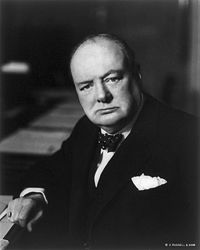
Structure
The United Kingdom is a constitutional monarchy. Hereditary monarch Queen Elizabeth II has been chief of state since February 6, 1952, while the Heir Apparent is Prince Charles, the son of the Queen, born November 14, 1948. Prime Minister Gordon Brown has been head of government since June 27, 2007. After legislative elections, the leader of the majority party or the leader of the majority coalition is usually the prime minister, who appoints a cabinet.
The bicameral parliament consists of a House of Lords, which has 618 seats consisting of approximately 500 life peers, 92 hereditary peers, and 26 clergy, and a House of Commons, which has 646 members elected by popular vote to serve terms of five-years, or less if the House is dissolved earlier. The parliament is traditionally considered to be "supreme" in that it is able to legislate on any matter and not bound by decisions of its predecessors.
In the House of Lords, elections are held only as vacancies in the hereditary peerage arise, whereas in the House of Commons, elections were last held in May 2005. In those elections, Labor took 35.2 percent of the vote, the Conservative took 32.3 percent, Liberal Democrats 22 percent, and others took 10.5 percent. In 1998, elections were held for a Northern Ireland Assembly. Because of unresolved disputes, the transfer of power from London to Northern Ireland came only at the end of 1999 and has been suspended four times, the latest occurring in October 2002 and lasting until May 2007. In 1999, there were elections for a Scottish Parliament and a Welsh Assembly.
The United Kingdom is one of the few countries in the world today that does not have a codified constitution, relying instead on traditional customs and separate pieces of constitutional law. The British system of government has been emulated around the world—a legacy of the British Empire's colonial past—most notably in the other Commonwealth Realms.
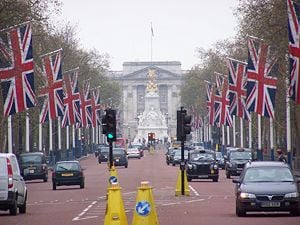
In the United Kingdom, the monarch has extensive theoretical powers, but his/her role is mainly, though not exclusively, ceremonial. The monarch is an integral part of Parliament (as the "Crown-in-Parliament") and theoretically gives Parliament the power to meet and create legislation. An Act of Parliament does not become law until it has been signed by the monarch (known as Royal Assent), although not one has refused assent to a bill that has been approved by Parliament since Queen Anne in 1708. Although the abolition of the monarchy has been suggested, the popularity of the monarchy remains strong in the United Kingdom. Support for a British republic usually fluctuates between 15 percent and 25 percent of the population, with roughly 10 percent undecided or indifferent.
Since the 1920s, the two largest political parties in British politics have been the Labour Party and Conservative Party. Though coalition and minority governments have been an occasional feature of Parliamentary politics, the first-past-the-post electoral system tends to maintain the dominance of these two parties, though each has in the past century relied upon a third party to deliver a working majority. The Liberal Democrats, the third largest party, seek a reform to address the dominance of the two-party system.
Though many in the United Kingdom consider themselves "British" as well as "English," "Scottish," "Welsh," or "Irish" (and increasingly also "Afro-Caribbean," "Indian," or "Pakistani"), there has long been a widespread sense of separate national identities in the nations of Scotland and Wales, and among the Catholic community in Northern Ireland. Independence for the Republic of Ireland in 1922 provided only a partial solution to what had been termed in the nineteenth century the "Irish Question," and competing demands for a united Ireland or continued union with Great Britain have brought civil strife and political instability up to the present day.
Though "nationalist" (as opposed to "unionist") tendencies have shifted over time in Scotland and Wales, with the Scottish National Party founded in 1934 and Plaid Cymru (the Party of Wales) in 1925, a serious political crisis threatening the integrity of the United Kingdom has not occurred since the 1970s. Scotland, Wales, and Northern Ireland each possess a legislature and government alongside that of the United Kingdom. However, this increased autonomy and devolution of executive and legislative powers has not contributed to a reduction in support for independence from the United Kingdom, with the rise of new pro-independence parties.
The resurgence in the Celtic language and identity, as well as "regional" politics and development, has contributed to forces pulling against the unity of the state. In Northern Ireland, there has been a significant decrease in violence over the last 20 years, though the situation remains tense, with the more hardline parties, such as Sinn Féin and the Democratic Unionists, now holding the most parliamentary seats.
The United Kingdom has three distinct systems of law. English law, which applies in England and Wales, and Northern Ireland law, which applies in Northern Ireland, are based on common-law principles. Scots law, which applies in Scotland, is a hybrid system based on both common-law and civil-law principles. The Act of Union 1707 guarantees the continued existence of a separate law system for Scotland.
The Appellate Committee of the House of Lords is the highest court in the land for all criminal and civil cases in England, Wales, and Northern Ireland, and for all civil cases in Scots law. Recent constitutional changes will see the powers of the House of Lords transfer to a new Supreme Court of the United Kingdom.
In England and Wales, the court system is headed by the Supreme Court of Judicature of England and Wales, consisting of the Court of Appeal, the High Court of Justice (for civil cases) and the Crown Court (for criminal cases). In Scotland, the chief courts are the Court of Session, for civil cases, and the High Court of Justiciary, for criminal cases, while the sheriff court is the Scottish equivalent of the county court. The Judicial Committee of the Privy Council is the highest court of appeal for several independent Commonwealth countries, the UK overseas territories, and the British crown dependencies.
Administrative subdivisions
The United Kingdom is divided into four parts, commonly referred to as the constituent countries. Each nation is further subdivided for the purposes of local government. The Queen appoints a Lord-Lieutenant as her personal representative in lieutenancy areas across the UK, which is little more than a ceremonial role.
Historically, the four nations were divided into counties as areas for local government administration. Although these are still used to some extent for this purpose and as geographical areas, they are no longer the sole basis for local government administration.
England has been divided into nine intermediate-level Government Office Regions. Each region is made up of counties and unitary authorities, apart from London, which consists of London boroughs. City status is governed by Royal Charter. In 2007, there were 66 British cities (50 in England, six in Scotland, five in Wales, and five in Northern Ireland).
The British crown has sovereignty over the Bailiwicks of Jersey and Guernsey, and the Isle of Man, known collectively as the crown dependencies. These are lands owned by the British monarch, but are not part of the United Kingdom, and are not in the European Union. However, the Parliament of the United Kingdom has the authority to legislate for the dependencies, and the British government manages their foreign affairs and defense.
The UK also has 14 overseas territories around the world, the last remaining territories of the British Empire. The overseas territories are not considered part of the UK, but in some cases the local populations have British citizenship and the right to live in the UK.
Military
The armed forces of the United Kingdom are known as Her Majesty's Armed Forces. Their Commander-in-Chief is the British monarch, they are managed by the Ministry of Defence, and are controlled by the Defence Council.
The United Kingdom fields one of the most powerful and comprehensive armed forces in the world. It has significant global capabilities, with total allied naval tonnage second only to the United States military and the third largest share of tactical combat aircraft to the US and France. The UK has the second or third highest military expenditure in the world, after the United States and China. The United Kingdom possesses a comprehensive nuclear arsenal, one of the small number of countries to do so, utilizing the submarine-based Trident II ballistic missile system with nuclear warheads.
The British Armed Forces are active participants in the North Atlantic Treaty Organization (NATO) and other coalition operations.
The British Army had a reported strength of 102,440 in 2005, and the Royal Air Force a strength of 49,210. The 36,320-member Royal Navy operates the United Kingdom's nuclear deterrent, which consists of four Trident missile-armed submarines, while the Royal Marines are the Royal Navy's Light Infantry units for amphibious operations and for specialist reinforcement forces in and beyond the NATO area. This puts total active duty military troops in the 190,000 range, currently deployed in over 80 countries.
There are also reserve forces supporting the regular military. These include an army reserve, the Territorial Army (TA); the Royal Naval Reserve (RNR), Royal Marines Reserve (RMR) and the Royal Auxiliary Air Force (RAuxAF). About 9 percent of the regular armed forces is made up of women, with more in the reserve forces.
The United Kingdom Special Forces, principally the Special Air Service (SAS) and Special Boat Service (SBS), but including others, provide troops trained for quick, mobile, military responses in counter-terrorism, land, maritime and amphibious operations, often where secrecy or covert operations are required. The last war in which the British military fought alone was the Falklands War of 1982, with full-scale combat operations lasting almost three months.
Foreign relations
The United Kingdom is a permanent member of the United Nations Security Council. It is also a large member state of the European Union, and is one of the three "big powers" along with Germany and France. The United Kingdom also has close relations with the United States, the Special Relationship. Britain's close allies outside of Europe include members of the Anglosphere and Commonwealth of Nations, a legacy of the British Empire. With its membership of the G8 and NATO, Britain has a certain influence in international institutions. Britain's global presence is amplified further through its trading relations and its armed forces, which maintains approximately 80 military installations and other deployments around the globe
Economy
The British economy is the home of the Anglo-Saxon economic model, focusing on the principles of liberalization, the free market, "common law" relating to property, and low taxation and regulation. Based on market exchange rates, the United Kingdom is the fifth largest economy in the world; the second largest in Europe after Germany, and the sixth-largest overall by purchasing power parity (PPP) exchange rates.
The British were the first in the world to enter the Industrial Revolution, and, like most industrializing countries at the time, initially concentrated on heavy industries such as shipbuilding, coal mining, steel production, and textiles. The empire created an overseas market for British products, allowing the United Kingdom to dominate international trade in the nineteenth century. However, as other nations industrialized and surplus labor from agriculture began to dry up, the United Kingdom started to lose its economic advantage. As a result, heavy industry declined throughout the twentieth century. The British service sector, however, has grown substantially, and now makes up about 73 percent of GDP.
In the 1980s, under the Government of Margaret Thatcher, most state-owned enterprises in the industrial and service sectors, which since the 1940s had been nationalized, were privatized. The British Government now owns very few industries/businesses apart from the |postal service and a few others.
The British economy, by the beginning of the twenty first century, has gone through the longest period of sustained economic growth for more than 150 years, and is one of the strongest European Union economies in terms of inflation, interest rates and unemployment, all of which remain relatively low. However, in common with the economies of other English-speaking countries, it has higher levels of income inequality than some European countries.
The service sector of the United Kingdom is dominated by financial services, especially in banking and insurance. London is one of the world's largest financial centers with the London Stock Exchange, the London International Financial Futures and Options Exchange, and the Lloyd's of London insurance market all based in the city. It also has the largest concentration of foreign bank branches in the world. In the past decade, a rival financial center in London has grown in the Docklands area, with HSBC, Citigroup, and Barclays Bank all relocating their head offices there. The Scottish capital, Edinburgh also has one of the large financial centers of Europe
Tourism is very important to the British economy. With over 27 million tourists a year, the United Kingdom is ranked as the sixth major tourist destination in the world.
The British manufacturing sector, however, has greatly diminished since World War II. It is still a significant part of the economy, but only accounted for one-sixth of national output in 2003. The British motor industry is a significant part of this sector, although all large-volume producers are now foreign-owned. Civil and defense aircraft production is led by the United Kingdom's largest aerospace firm, BAE Systems, and the pan-European consortium known as Airbus. Rolls-Royce holds a major share of the global aerospace engines market. The chemical and pharmaceutical industry is also strong in the UK, with the world's second and third largest pharmaceutical firms (GlaxoSmithKline and AstraZeneca, respectively) being based in the UK.
The United Kingdom's agriculture sector is small by European standards, accounting for only 0.9 percent of GDP. The UK though has large coal, natural gas, and oil reserves. Primary energy production accounts for about 10 percent of Gross domestic product (GDP), one of the highest shares of any industrial state.
The currency of the UK is pound sterling, represented by the symbol £. The Bank of England is the central bank and is responsible for issuing currency, although banks in Scotland and Northern Ireland retain the right to issue their own notes, subject to retaining enough Bank of England notes in reserve to cover the issue. The UK chose not to join the Euro on the currency's launch, although the government has pledged to hold a public referendum for deciding membership if "five economic tests" are met.
Government involvement over the economy is exercised by the Chancellor of the Exchequer who heads HM Treasury, but the Prime Minister, is First Lord of the Treasury (the Chancellor of the Exchequer being the Second Lord of the Treasury). However since 1997, the Bank of England has control of interest rates and other monetary policy. The UK government has greatly increased public sector spending (i.e.: government spending of taxes) since 1995, and annual spending on investment in infrastructure has grown from £5.6-billion in 1997 to £29-billion in 2006.
The government's Department for Transport oversees the well-developed transport system in the United Kingdom. A radial road network of 29145 miles of main roads is centered on London, Edinburgh and Belfast, while, in Great Britain, a motorway network of 2173 miles is centered on Birmingham and London. There are a further 213,750 miles of paved roads.
The National Rail network of 10,072 route miles (16,116 route kilometers) in Great Britain and 189 route miles (303km) in Northern Ireland carries over 18,000 passenger trains and 1000 freight trains daily. Urban rail networks are well developed in London and several other cities. There was once over 30,000 route miles of rail network in the U.K., however most of this was reduced over a time period from 1955 to 1975, much of it after a report by a government advisor Richard Beeching in the mid 1960s (known as the Beeching Axe).
Heathrow Airport is the world's busiest international airport, and being an island nation the UK has a considerable network of sea ports, which received over 558 million tons of goods in 2003–04.
Exports totaled $468.8-billion in 2006. Export commodities included manufactured goods, fuels, chemicals, food, beverages, and tobacco. Export partners included the United States 13.9 percent, Germany 10.9 percent, France 10.4 percent, Ireland 7.1 percent, Netherlands 6.3 percent, Belgium 5.2 percent, and Spain 4.5 percent. Imports totaled $603-billion. Import commodities included manufactured goods, machinery, fuels, and foodstuffs. Import partners included Germany 12.8 percent, the United States 8.9 percent, France 6.9 percent, Netherlands 6.6 percent, China 5.3 percent, Norway 4.9 percent, and Belgium 4.5 percent.
Per capita GDP was $30,436, in 2005, a rank of 18th, unemployment was 2.9 percent in 2006, and 17 percent lived below the poverty line in 2002.
Demographics
The United Kingdom's population increased to 60.2 million in 2006, the third-largest in the European Union (behind Germany and France) and the twenty-first largest in the world. The increase resulted from net immigration, and from a rising birth rate and increasing life expectancy—of 78.7 years for the total population in 2007. Its overall population density is one of the highest in the world. About a quarter of the population lives in England's prosperous south-east and is predominantly urban and suburban, with an estimated 7,517,700 in the capital of London.
Ethnicity
Present day Britons are descended mainly from the varied ethnic stocks that settled there before the eleventh century. The pre-Celtic, Celtic, Roman, Anglo-Saxon, and Norse influences were blended on Great Britain under the Normans, Scandinavian Vikings who had lived in Northern France. Between the various constituent countries, there has been sufficient internal migration to mix the population.
Constant waves of immigration hit the UK, with Europe, Africa and South-East Asia being the biggest areas from where people emigrate. In the 2001 Census, 7.9 percent of the UK's population identified themselves as an "ethnic minority." In some UK cities the percentage of "minority groups" is large but is still less than half. For example; Birmingham (UK's second largest city) has 29.6 percent, and Leicester 36 percent. There are a large number of Indians, mainly from northern India, who make up about 2.0 percent of the population.
Ethnicity, as detailed in the 2001 UK Census: White British, 85.67 percent; white (other), 5.27 percent; Indian, 1.8 percent; Pakistani, 1.3 percent; mixed race, 1.2 percent; white Irish, 1.2 percent; black Caribbean, 1.0 percent; black African, 0.8 percent; Bangladeshi, 0.5 percent; Asian (non-Chinese), 0.4 percent; British Chinese, 0.4 percent; other, 0.4 percent; and black (others), 0.2 percent;
Religion
A majority of Britons, 72 percent, identify themselves as Christian, although the United Kingdom has one of the lowest levels of public worship attendance in the world, with less than 8 percent of people attending any form of worship on a regular basis (of whom the majority are of middle-aged and older generations).
The Church of England is the established church in England, and acts as the "mother" and senior branch of the worldwide Anglican Communion. It was part of the Roman Catholic Church from 597C.E. but separated from Rome in 1534 during the reign of Henry VIII of England. The Church of England is a state church, and some of her bishops sit in the House of Lords. The British monarch is required to be a member of the Church of England under the Act of Settlement 1701 and is the Supreme Governor of the church. Roman Catholics are not allowed to become the monarch and the monarch is not allowed to marry a Catholic. This is part of the residual legislation passed to prevent any further religious upheaval caused by the Reformation. Canterbury Cathedral is the seat of the Archbishop of Canterbury the primate of the Church of England.
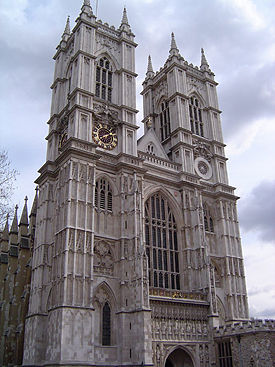
The Church of Scotland (known informally as The Kirk) is the national church of Scotland. It is Presbyterian in structure and Calvinist in theology and since 1921 has not been subject to state control. The British monarch is an ordinary member, although the monarch is required to swear an oath to "defend the security" of the Church at their coronation. Splits in the Church since the Reformation have led to the creation of various other Presbyterian churches in Scotland including the Free Church of Scotland and the Free Presbyterian Church of Scotland.
In Wales, the Anglican Church in Wales was disestablished in 1920. The Anglican Church of Ireland was disestablished in the nineteenth century.
The Roman Catholic Church is the second largest denomination in the UK. After the Reformation, strict laws were passed against Catholics; some of these were removed by the Catholic Emancipation laws in the 1850s. The Catholic hierarchy is separate in England and Wales, Scotland.
In Northern Ireland, the Catholic Church is the largest single denomination. The Presbyterian Church in Ireland is the largest Protestant denomination and is in terms of theology and history very closely linked to the Church of Scotland. Other large Christian groups are the Methodists and the Baptists.
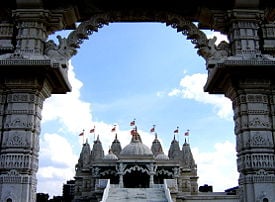
Muslims are believed to number over 1.8 million, and mostly live cities and large towns including London, Birmingham, Bradford and Oldham. Mosques are a common in some parts of Britain. The biggest groups of British Muslims are of Pakistani, Indian and Bangladeshi origin. More recently, the wave of Somali and Middle-Eastern asylum seekers has increased Britain's Muslim population. A 2006 controversy over the burqa reflects a split between some Britons who are questioning the extent to which Islam is compatible with British society, and others who are happy with the widespread presence of Islam in Britain.
The religions of Indian origin, like Hinduism and Sikhism in Britain are also increasing in number, with over 500,000 Hindus and 320,000 Sikhs in the country. However, these figures are likely to have increased, as they are based on the 2001 census.
Census data regarding religious belief: Christian 71.6 percent, Muslim 2.7 percent, Hindu 1.0 percent, Sikh 0.6 percent, Jewish 0.5 percent, Buddhist 0.3 percent, other religion 0.3 percent, not stated 7.3 percent, no religion 15.5 percent. A total of 76.8 percent of the population adhere to some religion.
Language
While the UK does not have an official language, the dominant language is English. This is a West Germanic language, descended from Old English, which features a large number of borrowings from Norman French. The other main indigenous languages are the Celtic languages of the British Isles. These fall into two groups: the P-Celtic languages (Welsh and the Cornish language); and the Q-Celtic languages (Irish and Scottish Gaelic).
The English language has spread to all corners of the world (primarily because of the British Empire as well as the dominant status of the USA) and is referred to as a "global language." Worldwide, it is taught as a second language more than any other. The United Kingdom's Celtic languages are also spoken by small groups around the globe, mainly Gaelic in Nova Scotia, Canada, and Welsh in Patagonia, Argentina.
Additional indigenous languages are Scots (which is closely related to English); and British Sign Language (Northern Ireland Sign Language is also used in Northern Ireland). Celtic dialectal influences from Cumbric persisted in Northern England for many centuries, most famously in a unique set of numbers used for counting sheep.
Immigrants, especially from the Commonwealth, speak many other languages, including Gujarati, Hindi, Punjabi, Urdu, Bengali, Cantonese, Turkish and Polish. The United Kingdom has the largest number of Hindi and Punjabi speakers outside Asia.
Men and women
About half of British women work, and of these, half are part-time workers. The ideal of gender equality is widely shared, but inequality is evident in access to occupations by women and men, pay levels for similar kinds of work, and in the allocation of domestic tasks.
Marriage and the family
Historically most people in the United Kingdom lived in nuclear families. This reflected an economic landscape where the general populace tended to have less spending power, meaning that it was more practical to stick together rather than go their individual ways. This pattern also reflected gender roles. Men were expected to go out to work and women were expected to stay at home and look after the families.
In the twentieth century, the emancipation of women, the greater freedoms enjoyed by both men and women in the years following the Second World War, greater affluence and easier divorce] have changed gender roles and living arrangements significantly. The trend is a rise in single people living alone and the decline of the nuclear family.
From the 1990s, the break-up of the traditional family unit, when combined with a low interest rate environment and other demographic changes, has created great pressure on the housing market, in particular regarding the accommodation of key workers such as nurses, other emergency service workers and teachers, who are priced out of most housing, especially in South East England.
Some research indicates that in the twenty first century, young people are tending to continue to live in the parental home for much longer than their predecessors. The high cost of living, combined with rising cost of accommodation, further education and higher education means that many young people cannot afford to live independent lives from their families.
Premarital sex and unmarried cohabitation are widely accepted. However, single motherhood caused by unstable cohabiting relationships, or marital breakdown, or as a means of obtaining welfare, is seen as a big problem because of its drain on the welfare budget, and subsequent problems of child abuse, and juvenile delinquency, rather than as a moral question.
Education
The United Kingdom's high literacy rate of 99 percent is attributable to universal public education introduced for the primary level in 1870 and secondary level in 1900 (except in Scotland where it was introduced in 1696).
There are separate education systems in England, Northern Ireland, Scotland and Wales. Education (although not necessarily in the form of school attendance) is compulsory for all children between the ages of five and 16, though the UK Government announced in January 2007 plans to change this to five - 18 in England. Most English, Welsh and Northern Irish state (but not independent) schools usher students through nursery school, one of two primary school tracks, and one of two secondary tracks, of which sixth form is optional. About one-fifth of British students go on to post-secondary education (18+). Most children and young people in the UK are educated in state-funded schools financed through the tax system and so parents do not pay directly for the cost of education.
Education in England, Wales and Northern Ireland follows the national curriculum, which was introduced in 1988, which includes the core subjects English, mathematics, and science and the foundation subjects: design and technology, information and communication technology (known as ICT), history, geography, modern foreign languages (MFL), music, art and design and the subjects of the basic curriculum, physical education, citizenship education plus compulsory religious education (RE) which has a unique place in British law. Welsh is also a core subject in Wales. Scottish Gaelic may be taught to some pupils in Scotland.
The Scottish curriculum has emphasized breadth across a range of subjects, while the English, Welsh and Northern Irish system has emphasized greater depth of education over a smaller range of subjects at secondary school level.
The United Kingdom contains some of the world's leading, and oldest, seats of higher education, such as the ancient multifaculty universities at Oxford and Cambridge. It has produced many great scholars, scientists and engineers including Sir Isaac Newton, Adam Smith, Kelvin, Sir Humphry Davy, Joseph John Thomson, Michael Faraday, Charles Darwin, Alexander Fleming, Francis Crick, Sir Joseph William Bazalgette and Isambard Kingdom Brunel. The nation is credited with numerous scientific discoveries including hydrogen, gravity, the electron, structure of DNA, antibiotics and inventions including the chronometer, steam locomotive and the modern railway, vaccination, television, electric lighting, the electric motor, the screw propeller, the internal combustion engine, the jet engine, the modern bicycle, the electronic computer, along with the later development of the World Wide Web.
In 2006, it was reported that the UK was the most productive source of research after the United States; with the UK producing 9 percent of the world's scientific research papers with a 12 percent share of citations.
Class
Traditionally, British society has been stratified into three classes, with the highest occupied by the aristocratic inheritors of old, landed wealth. Those in the working class typically grow up in a family supported by wages earned in industrial or agricultural labor. Neither parent has university education, and the family home is rented. The working class supports the trade union movement and the Labor Party. A middle-class person has parents with white-collar jobs who are likely to have higher education, and own their suburban house. Education is seen as the key to advancement. They tend to support the Conservative Party, which stresses self-sufficiency and individualism. However, de-industrialization, increased social mobility, and the emergence of the knowledge economy have re-defined notions of class, so that numerous educated middle class people vote for the Labor Party.
Culture
Science and philosophy
Philosophy in Britain has always tended towards nominalism, the idea that only individuals exist, rather than supra-individual universals, essences, or forms, and that universals are the products of abstraction from individuals by the human mind and have no extra-mental existence. Two prominent medieval nominalists were Duns Scotus ad William of Occam. England and Scotland both had their own Enlightenments which differed very much from the French rationalist Enlightenment and German romantic Counter-Enlightenment. Modern Empiricism started in England with Francis Bacon, the founder of modern scientific method. It continued with Thomas Hobbes, England's most significant political philosopher, John Locke who contributed to modern democratic theory, and the Irish Anglican divine Bishop Berkeley. During the time England was also the scene of the fierce debate over deism. Scotland in the 18th century was known as the Athens of the North. It produced such luminaries as Samuel Fergusan, Thomas Reid, Adam Smith and David Hume. Together they produced the philosophical basis for modern liberal democracy and the free market.
Prominent English figures from the field of science and mathematics include Sir Isaac Newton, Michael Faraday, J. J. Thomson, Charles Babbage, Charles Darwin, Stephen Hawking, Christopher Wren, Alan Turing, Francis Crick, Joseph Lister, Tim Berners-Lee, Andrew Wiles and Richard Dawkins. Some experts claim that the earliest concept of a Metric system was invented by John Wilkins, first secretary of the Royal Society in 1668.[5]
England played an important role in the development of Western philosophy, particularly during the Enlightenment. Jeremy Bentham, leader of the Philosophical Radicals, and his school are recognised as the men who unknowingly laid down the doctrines for Socialism.[6] Bentham's impact on English law is also considerable. Aside from Bentham, major English philosophers include Francis Bacon, Thomas Hobbes, John Locke, Thomas Paine, John Stuart Mill, Bernard Williams and Bertrand Russell.
Architecture
The earliest remnants of architecture in the United Kingdom are mainly Neolithic monuments such as Stonehenge and Avebury, and Roman ruins such as the spa in Bath. Many castles remain from the medieval period and in most towns and villages the parish church is an indication of the age of the settlement, built as they were from stone rather than the traditional wattle and daub.
Over the two centuries following the Norman conquest of 1066, and the building of the Tower of London], many great castles such as Caernarfon Castle in Wales and Carrickfergus Castle in Ireland were built to suppress the natives. Large houses continued to be fortified until the Tudor period, when the first of the large gracious unfortified mansions such as the Elizabethan Montacute House and Hatfield House were built.
The English Civil War (1642—1649) proved to be the last time in British history that houses had to survive a siege. Corfe Castle was destroyed following an attack by Oliver Cromwell's army, but Compton Wynyates survived a similar ordeal. After this date houses were built purely for living, and design and appearance were for ever more important than defense.
Just prior to the Civil War, Inigo Jones, who is regarded as the first significant British architect, came to prominence. He was responsible for importing the Palladian manner of architecture to Britain from Italy; the Queen's House at Greenwich is perhaps his best surviving work.
Following the restoration of the monarchy in 1660 and the Great Fire of London in 1666 an opportunity was missed in London to create a new metropolitan city, featuring modern architectural styles. Although one of the best-known British architects, Sir Christopher Wren, was employed to design and rebuild many of the ruined ancient churches of London, his master plan for rebuilding London as a whole was rejected. It was in this period that he designed the building that he is perhaps best known for, St Paul's Cathedral.
In the early eighteenth century baroque architecture—popular in Europe—was introduced, and Blenheim Palace was built in this era. However, baroque was quickly replaced by a return of the Palladian form. The Georgian architecture of the eighteenth century was an evolved form of Palladianism. Many existing buildings such as Woburn Abbey and Kedleston Hall are in this style. Among the many architects of this form of architecture and its successors, neoclassicism and Romanticism, were Robert Adam, Sir William Chambers, and James Wyatt.
In the early nineteenth century the romantic medieval gothic style appeared as a backlash to the symmetry of Palladianism, and such buildings as Fonthill Abbey were built. By the middle of the nineteenth century, as a result of new technology, construction was able to develop incorporating steel as a building component; one of the greatest exponents of this was Joseph Paxton, architect of the Crystal Palace. Paxton also continued to build such houses as Mentmore Towers, in the still popular retrospective English Renaissance styles. In this era of prosperity and development British architecture embraced many new methods of construction, but ironically in style, such architects as August Pugin ensured it remained firmly in the past.
At the beginning of the twentieth century a new form of design—arts and crafts—became popular. The architectural form of this style, which had evolved from the nineteenth century designs of such architects as George Devey, was championed by Edwin Lutyens. Arts and crafts in architecture is symbolized by an informal, non-symmetrical form, often with mullioned or lattice windows, multiple gables and tall chimneys. This style continued to evolve until World War II.
Following the Second World War reconstruction went through a variety of phases, but was heavily influenced by Modernism, especially from the late 1950s to the early 1970s. Many bleak town centre redevelopments—criticized for featuring hostile, concrete-lined "windswept plazas"—were the fruit of this interest, as were many equally bleak public buildings, such as the Hayward Gallery. Many Modernist-inspired town centers are today in the process of being redeveloped.
In the immediate post-war years, perhaps hundreds of thousands of council houses in vernacular style were built, giving working class people their first experience of private gardens and indoor sanitation.
Modernism remains a significant force in UK architecture, although its influence is felt predominantly in commercial buildings. The two most prominent proponents are Lord Rogers of Riverside and Lord Foster of Thames Bank. Rogers' iconic London buildings are probably Lloyd's Building and the Millennium Dome, while Foster created the Swiss Re Buildings (aka The Gherkin) and the City Hall (London).
The United Kingdom has one of the highest population densities in Europe. Housing tends to be smaller and more closely packed than in other countries, particularly compared to North America. The British have a particular affinity with the terraced house, dating back to the aftermath of the Great Fire of London. The majority of surviving housing built before 1914 is of this type, and consequently it dominates inner residential areas. In the twentieth century the process of suburbanization led to a spread of semi-detached and detached housing. In the aftermath of the Second World War, public housing was dramatically expanded to create a large number of council estates, although the majority of these have since been purchased by their tenants. Although many British people live in apartments, it is commonly argued that they are less comfortable with this form of living than their European counterparts. This is not the case in Scotland, where many more people live in this type of housing.
Art
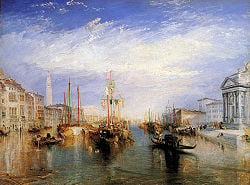
The oldest art in the United Kingdom can be dated to the Neolithic period, and is found in a funerary context. But it is in the Bronze age that the first innovative artworks are found. The Beaker people, who arrived in Britain around 2500 B.C.E., were skilled in metal refining, working at first in copper, but later bronze and gold. The Wessex culture excelled in the making of gold ornaments. Works of art placed in graves or sacrificial pits have survived.
In the Iron Age, the Celts made gold ornaments, but stone and most likely wood was also used. This style continued into the Roman period, and would find a renaissance in the Medieval period. It also survived in the Celtic areas not occupied by the Romans, largely corresponding to the present-day Wales and Scotland.
The Romans, arriving in the first century B.C.E., brought with them the Classical style. Funerary monuments, statues and busts have survived. They also brought glasswork and mosaics. Christian art from the fourth century, has been preserved in mosaics with Christian symbols and pictures. Celtic and Scandinavian art have in common the use of intricate, intertwined patterns of decoration.
Anglo-Saxon sculpting was outstanding for its time in the eleventh century, as proved by pre-Norman ivory carvings. Celtic high crosses show the use of Celtic patterns in Christian art. Scenes from the Bible were depicted, framed with the ancient patterns. Some ancient symbols were redefined. Murals were painted on the white-chalked walls of stone churches, and stained glass was used in church and other windows.
As a reaction to abstract expressionism, pop art emerged originally in England at the end of the 1950s.
Notable visual artists from the United Kingdom include John Constable, Sir Joshua Reynolds, Thomas Gainsborough, William Blake and J.M.W. Turner. Twentieth century artists included Francis Bacon, David Hockney, Bridget Riley, and the pop artists Richard Hamilton and Peter Blake. New York-born Sir Jacob Epstein was a pioneer of modern sculpture. More recently, the so-called Young British Artists have gained some notoriety, particularly Damien Hirst and Tracey Emin. Notable illustrators include Aubrey Beardsley, Roger Hargreaves, and Beatrix Potter.
Cinema
The United Kingdom has been influential in the technological, commercial, and artistic development of cinema and probably second only to the USA in producing the greatest quantity of world-wide film stars. Despite a history of successful productions, the industry is characterized by an ongoing debate about its identity (including economic and cultural issues) and the influences of American and European cinema, although it is fair to say a brief "golden age" was enjoyed in the 1940s from the studios of J. Arthur Rank and Korda.
Modern cinema is generally regarded as descending from the work of the French Lumière brothers in 1892, and their show first came to London in 1896. However, the first moving pictures developed on celluloid film were made in Hyde Park, London in 1889 by William Friese Greene, a British inventor, who patented the process in 1890. The film is the first known instance of a projected moving image. The first people to build and run a working 35 mm camera in Britain were Robert W. Paul and Birt Acres. They made the first British film Incident at Clovelly Cottage in February 1895, shortly before falling out over the camera's patent.
Clothing
There is no specifically British national costume. Even individually, England, Wales and Northern Ireland have only vestiges of a national costume; Scotland has the kilt and Tam o'shanter. In England, certain military uniforms such as the Beefeater or the Queen's Guard are considered to be symbolic of Englishness, though they are not official national costumes. Morris dancers or the costumes for the traditional English May dance are cited by some as examples of traditional English costume.
This is in large part due to the critical role that British sensibilities have played in world clothing since the eighteenth century. Particularly during the Victorian era, British fashions defined acceptable dress for men of business. Key figures such as Beau Brummell, the future Edward VII and Edward VIII created the modern suit and cemented its dominance. As such, it could be argued that the national costume of the British male is a three-piece suit, necktie and bowler hat - an image regularly used by cartoonists as a caricature of Britishness.
Cuisine
Although there is ample evidence of a rich and varied approach to cuisine during earlier historical periods (particularly so among wealthy citizens), during much of the nineteenth and twentieth century Britain had a reputation for somewhat conservative cuisine. The stereotype of the native cuisine was of a diet progressing little beyond stodgy meals consisting of "meat and two veg." Even today, in more conservative areas of the country, "meat and veg" cuisine is still the favored choice at the dinner table.
Traditional British fare usually includes dishes such as fish and chips; roast dishes of beef, lamb, chicken and pork; both sweet and savory pies and puddings, as well as regional dishes such as the Cornish pasty and Lancashire Hotpot.
On January 8, 1940, four months after the outbreak of World War II, a system of food rationing was introduced to conserve stocks and feed the nation during the critical war years. Rationing persisted until July 4, 1954, when a 14-year period of relative privation (which profoundly affected a generation of people attitude to "a culture of food") finally came to an end. With the end of rationing, Britain's diet began to change, slowly at first during the 1950s and 1960s under the influence of such people as Elizabeth David, but immeasurably by the closing decades of the twentieth century.
Literature
The United Kingdom has produced many well known writers including: Geoffrey of Monmouth (1100-1145), Geoffrey Chaucer (1343-1400), Julian of Norwich (1342–1416), Thomas Malory (1405–1471), Edmund Spenser (1552-1599), Christopher Marlowe (1564-1593), Ben Johnson (1572-1637), John Milton (1608-1674), Jonathan Swift (1667-1745), Alexander Pope (1688-1744), John Bunyan (1628–1688), Samuel Pepys (1633–1703), Henry Fielding (1707–1754), Samuel Johnson (1709-1784), Oliver Goldsmith (1728–1774), Daniel Defoe (1659–1731), Walter Scott (1771–1832),Jane Austen (1775–1817), Mary Shelley (1797–1851), Elizabeth Gaskell (1810–1865), William Makepeace Thackeray (1811–1863), Charles Dickens (1812–1870), Wilkie Collins (1824–1889), Bram Stoker (1847–1912), Anthony Trollope (1815–1882), Charlotte Brontë (1816–1855), Emily Brontë (1818–1848), George Elliot (1819–1880), Samuel Butler (1835-1902), Thomas Hardy (1840-1928), Oscar Wilde (1854–1900), George Bernard Shaw (1856–1950), Joseph Conrad (1857-1924), Arthur Conan Doyle (1859–1930), H. G. Wells (1866–1946), Arnold Bennett (1867-1931), John Galsworthy (1867–1933), James Joyce (1882-1941), Virginia Woolf (1882-1941), D. H. Lawrence (1885-1930), Agatha Christie(1890-1976), J. R. R. Tolkien (1892-1973), Aldous Huxley (1894-1963), George Orwell (1903-1950), Graham Greene (1904-1991), Ian Fleming (1908-1964), Muriel Spark (1918–2006).
Well known children's authors include Charles Kingsley (1819–1875), Robert Louis Stevenson (1850-1884)], Joseph Jacobs (1854-1916), J. M. Barrie (1860-1937), Rudyard Kipling (1865-1936), Beatrix Potter (1866-1943), A. A. Milne (1882–1956), Enid Blyton (1897-1968), C.S. Lewis (1898-1963), Lewis Carroll (1832-1898), Roald Dahl (1916–1990), J. K. Rowling and Philip Pullman.
Significant poets include: John Donne (1572-1631), George Herbert (1593–1633), John Milton (1608-1674), Thomas Gray (1716–1771), William Cowper (1731–1800) William Blake (1757-1827), Robert Burns (1759–1796), William Wordsworth (1770-1850), Samuel Taylor Coleridge (1772-1834), Lord Byron (1788-1824), Percy Bysshe Shelley (1792-1822), John Keats (1795- 1821), Elizabeth Barrett Browning (1806–1861), Alfred, Lord Tennyson (1809-1892), Edward Lear (1812–1888), Matthew Arnold (1822–1888), Christina Rossetti (1830–1894), Gerald Manley Hopkins (1844-1889), William Butler Yeats (1865-1939), Siegfried Sassoon (1886–1967), T. S. Eliot (1888-1965), R. S. Thomas (1913-2000), Wilfred Owen (1893-1918), John Betjeman (1906-1984), Philip Larkin (1922-1995), W. H. Auden (1907-1973), Dylan Thomas (1924-1953), and Ted Hughes (1930-1988).
Media
The UK has a virtually unrivalled number of media outlets. It has four quality national newspapers with quite different editorial perspectives as well as many other national and local papers and magazines. The prominence of the English language gives it a widespread international dimension.
The BBC is the UK's publicly-funded radio and television broadcasting corporation, and is the oldest broadcaster in the world. Funded by a compulsory television license, the BBC operates several television networks and radio stations both in the UK and abroad. The BBC's international television news service, BBC World, is broadcast throughout the world and the BBC World Service radio network is broadcast in 33 languages globally. Most digital cable television services are provided by NTL:Telewest, and free-to-air digital terrestrial television by Freeview.
Music
Composers from the UK have not achieved recognition as broad as that earned by their literary counterparts, and, particularly during the nineteenth century, were overshadowed in international reputation by other European composers; however, many works of earlier composers such as Thomas Tallis, William Byrd, and Henry Purcell (1659–1695) and George Frideric Handel (1685–1759) who composed The Messiah are still frequently performed throughout the world today. A revival of England's musical status began during the twentieth century with the prominence of composers such as Edward Elgar (1857-1934), Gustav Holst (1874-1934), William Walton (1902-1983), Ralph Vaughan Williams (1872-1958), Frederick Delius (1862-1934) and Benjamin Britten (1913-1976).
The UK was, with the US, one of the two main contributors in the development of rock and roll, and the UK has provided some of the world's most famous rock bands including The Beatles, Led Zeppelin, Queen, Deep Purple, The Who, Pink Floyd, Emerson, Lake & Palmer, Yes, Genesis, Black Sabbath and The Rolling Stones. The UK was at the forefront of punk rock with bands like The Sex Pistols and The Clash, music in the 1970s as well as the being the birthplace of many musical genres and movements such as hard rock, British invasion, heavy metal, Britpop, glam rock, drum and bass, progressive rock, punk rock, gothic rock, shoegazing, acid house, UK garage, Trip Hop and Dubstep.
Theatre
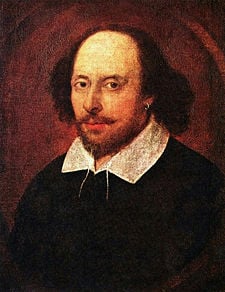
Theater was introduced to the UK from Europe by the Romans who built auditoriums across the country. By the medieval period theatre had developed with the mummers' plays, a form of early street theater associated with the Morris dance, concentrating on themes such as Saint George and the Dragon, and Robin Hood. These were folk tales re-telling old stories, and the actors traveled from town to town performing for their audiences in return for money and hospitality. The medieval mystery plays and morality plays, which dealt with Christian themes, were performed at religious festivals.
The reign of Elizabeth I in the late sixteenth century and early seventeenth century saw a flowering of the drama and all the arts. The most famous playwright in the world, William Shakespeare, wrote around 40 plays that are still performed in theatres across the world to this day. They include tragedies, such as Hamlet (1603), Othello (1604), and King Lear (1605); comedies, such as A Midsummer Night's Dream (1594—1596) and Twelfth Night (1602); and history plays, such as Henry IV, part 1—2. The Elizabethan age is sometimes nicknamed "the age of Shakespeare" for the amount of influence he held over the era. Other important Elizabethan and seventeenth-century playwrights include Ben Jonson, Christopher Marlowe, John Gay and John Webster.
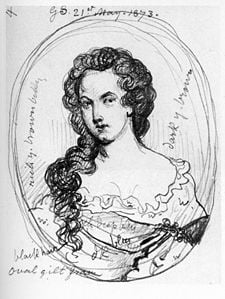
During the Interregnum (1642—1660), English theatres were kept closed by the Puritans for religious and ideological reasons. When the London theatres opened again with the Restoration of the monarchy in 1660, they flourished under the personal interest and support of Charles II. Wide and socially mixed audiences were attracted by topical writing and by the introduction of the first professional actresses (in Shakespeare's time, all female roles had been played by boys). New genres of the Restoration were heroic drama, pathetic drama, and Restoration comedy. The Restoration plays that have best retained the interest of producers and audiences today are the comedies, such as William Wycherley's The Country Wife (1676), The Rover (1677) by the first professional woman playwright, Aphra Behn, John Vanbrugh's The Relapse (1696), and William Congreve's The Way of the World (1700). Restoration comedy is famous or notorious for its sexual explicitness, a quality encouraged by Charles II (1660–1685) personally and by the rakish aristocratic ethos of his court.
In the eighteenth century, the highbrow and provocative Restoration comedy lost favor, to be replaced by sentimental comedy, domestic tragedy such as George Lillo's The London Merchant (1731), and by an overwhelming interest in Italian opera. Popular entertainment became more important in this period than ever before, with fair-booth burlesque and mixed forms that are the ancestors of the English music hall. The greatest actor/playwright of this age was David Garrick (1717–1779). He revived many plays including those of Shakespeare. By the early nineteenth century it was no longer represented by stage plays at all, but by the closet drama, plays written to be privately read in a "closet" (a small domestic room). The well known duo Gilbert (1836–1911) and Sullivan (1842–1900) produced many comic operas such as H.M.S. Pinafore, The Pirates of Penzance and The Mikado.
A change came in the late nineteenth century with the plays on the London stage by the Irishmen George Bernard Shaw and Oscar Wilde and the Norwegian Henrik Ibsen, Noël Coward (1899–1973) all of whom influenced domestic English drama and revitalised it. Contemporary playwrights include Robert Bolt (1924-1995), Harold Pinter (b. 1930) and Tom Stoppard (b. 1937)
The West End of London has a large number of theatres, particularly centred around Shaftesbury Avenue. A prolific composer of the twentieth century, Andrew Lloyd Webber, has dominated the West End for a number of years and his musicals have travelled to Broadway in New York and around the world, as well as being turned into films.
The Royal Shakespeare Company operates out of Shakespeare's birthplace Stratford-upon-Avon in England, producing mainly but not exclusively Shakespeare's plays.
Sport
The most popular participant pastime in Britain is fishing. A number of major sports originated in the United Kingdom, including football (known as soccer in North America and Australia), rugby football (rugger), hockey, squash, golf, cricket, tennis and boxing. Football is the most popular spectator sport. The home nations compete in international competitions individually as England, Scotland, Wales and Northern Ireland. It is because of this tradition that the Great Britain does not compete in football events at the Olympic Games. Rugby football differs internationally to association football, as the England, Scotland, Wales, and Ireland (including Northern Ireland) teams do come together to form the British and Irish Lions, as well as competing separately.
The UK is home to many world-renowned football clubs, such as Chelsea, Manchester United, Liverpool, and Arsenal in England, and Celtic and Rangers in Scotland. Clubs compete in national leagues and competitions and some go on to compete in European competitions. British teams are generally successful in European Competitions and several have become European Cup/UEFA Champions League winners: Liverpool (five times), Manchester United (twice), Nottingham Forest (twice), Aston Villa and Celtic. England won the Football World Cup in 1966.
Cricket was created in England and is one of the oldest sports in the world that is still played today. Far more people play cricket than football as every village in the country has a team. There are county leagues but most just support the national team. As with football there is no UK team. There is only an England side but many Welsh and Scottish players have played for England. Major English cricket grounds include Lords, The Oval, Headingly, Old Trafford, Edgbaston and Trent Bridge.
Rugby Union is played predominantly in Wales, Northern Ireland and Southern England. It originated with the actions of a Rugby School boy called William Webb Ellis, who picked up the ball in a game of football and ran with it. It is considered to be the national sport of Wales. England won the Rugby World Cup in 2003. Every four years the British and Irish Lions tour either Australia, New Zealand or South Africa. Whereas Rugby Union is an amateur game, Rugby league is a professional version of rugby that is generally played in the North of England.
UK's most successful sport, if judged by the number of recent wins in the international arena, is rowing which holds a strong presence amongst other rowing nations such as Australia, Canada and Germany. The UK's most successful sportsman currently is Steven Redgrave who won five gold and one bronze medals at five consecutive Olympic Games as well as numerous wins at the World Rowing Championships and Henley Royal Regatta.
The Wimbledon Championships are international tennis events held in Wimbledon in south London every summer and are seen as the most prestigious of the tennis calendar.
Thoroughbred racing started with Charles II of England as the "Sport of Kings" and is a royal pastime to this day. World-famous horse races include the Grand National and the Epsom Derby.
Golf is one of the most popular participation sports played in the UK, and St Andrews in Scotland is the sport's home course. Shinty or camanachd (a sport derived from the same root as the Irish hurling and similar to bandy) is popular in the Scottish Highlands, sometimes attracting crowds numbering thousands in the most sparsely populated region of the UK.
Many teams and drivers in Formula One and the World Rally Championship are based in the UK. The country also hosts legs of the Formula One and World Rallying Championship calendars and has its own Touring Car Racing championship, the BTCC. British Formula One world champions include Mike Hawthorn, Graham Hill (twice), Jim Clark (twice), John Surtees (who was also successful on motorcycles), Jackie Stewart (three times), James Hunt, Nigel Mansell, and Graham Hill's son, Damon Hill. British drivers have not been as successful in the World Rally championship, with only Colin McRae and the late Richard Burns winning the title.
Symbols
- The flag of the United Kingdom is the Union Flag (commonly known as the "Union Jack," though this is technically only correct when at sea). Created from the superimposition of the flags of England (St George's Cross) and Scotland (Saint Andrew's Cross); the Saint Patrick's cross, representing Ireland, was added to this in 1801.
- Britannia is a personification of Britain, originating from the Roman occupation of southern and central Great Britain. Britannia is symbolized as a young woman with brown or golden hair, wearing a Corinthian helmet and white robes. She holds Poseidon's three-pronged trident and a shield, bearing the Union Flag. Sometimes she is depicted as riding the back of a lion. In modern usage, Britannia is often associated with maritime dominance, as in the patriotic song Rule Britannia.
- The lion has also been used as a symbol of England; one is depicted behind Britannia on the 50p piece and one is shown crowned on the back of the 10p piece, it is also used as a symbol on the non-ceremonial flag of the British Army. Lions have been used as heraldic devices many times, including in the royal arms of both the kingdoms of England, Scotland and Kingdom of Gwynedd in Wales. The lion is featured on the emblem of the England national football team, giving rise to the popular football anthem Three Lions.
- The bulldog is sometimes used as a symbol of Great Britain.
- Britain (especially England) is also personified as the character John Bull.
ReferencesISBN links support NWE through referral fees
- Boyce, David George. 1996. The Irish question and British politics, 1868-1996. British history in perspective. Houndmills, Basingstoke, Hampshire: Macmillan Press. ISBN 9780312161064
- Davies, Norman. 1999. The Isles: A History. London: Macmillan. ISBN 0333692837
- Ferguson, Niall. 2003. Empire: The Rise and Demise of the British World Order. Basic Books. ISBN 0-465-02328-2
- Goldthorpe, John H., Catriona Llewellyn, and Clive Payne. 1980. Social mobility and class structure in modern Britain. Oxford: Clarendon Press. ISBN 9780198272472
- Sampson, Anthony. 1982. The changing anatomy of Britain. New York: Random House. ISBN 9780394531434 |
- Macfarlane, Alan. 1987. The culture of capitalism. Oxford, UK: Blackwell. ISBN 9780631136262
- Macfarlane, Alan. 1979. The origins of English individualism: the family, property, and social transition. New York: Cambridge University Press. ISBN 9780521295703
- Peacock, Herbert L. 1982. A history of modern Britain, 1815-1981. Heinemann. OCLC 59080590
External links
- United Kingdom, World Fact Book 2007, accessed August 12, 2007.
- United Kingdom Encyclopaedia Britannica, accessed August 15, 2007.
- United Kingdom Countries and Their Cultures To-Z, accessed August 15, 2007.
- United Kingdom BBC Country Profiles, accessed August 15, 2007.
- United Kingdom U.S. Department of State, accessed August 15, 2007.
- Britain economist.com, accessed August 15, 2007.
- Official website of the British Monarchy Accessed August 15, 2007.
- Official website of the United Kingdom Government Directgovt, accessed August 15, 2007.
- Official Yearbook of the United Kingdom National Statistics, accessed August 15, 2007.
Credits
New World Encyclopedia writers and editors rewrote and completed the Wikipedia article in accordance with New World Encyclopedia standards. This article abides by terms of the Creative Commons CC-by-sa 3.0 License (CC-by-sa), which may be used and disseminated with proper attribution. Credit is due under the terms of this license that can reference both the New World Encyclopedia contributors and the selfless volunteer contributors of the Wikimedia Foundation. To cite this article click here for a list of acceptable citing formats.The history of earlier contributions by wikipedians is accessible to researchers here:
- United_Kingdom history
- Geography_of_the_UK history
- London history
- Economy_of_the_United_Kingdom history
- Demography_of_the_United_Kingdom history
- Education_in_the_United_Kingdom history
- Cinema_of_the_United_Kingdom history
- History_of_the_United_Kingdom history
- Settlement_of_Great_Britain_and_Ireland history
- Culture_of_the_United_Kingdom history
- Norman_conquest_of_England history
- History_of_England history
- British_Empire history
- Industrial_Revolution history
- World_War_I history
- World_War_II history
The history of this article since it was imported to New World Encyclopedia:
Note: Some restrictions may apply to use of individual images which are separately licensed.
- ↑ Ferguson, Niall (2004). Empire, The rise and demise of the British world order and the lessons for global power. Basic Books. ISBN 0465023282.
- ↑ p.239, Davies, R. R. 1987. Conquest, coexistence and change: Wales 1063-1415 Clarendon Press, University of Wales Press. ISBN 0-19-821732-3
- ↑ Michael Prestwich, Edward I (London: Methuen, 1988, updated edition Yale University Press, 1997 ISBN 0-300-07209-0)
- ↑ Memoriale Fratris Walteri de Coventria, ed. W. Stubbs, (Rolls Series, no. 58), ii. 206.
- ↑ Metric system was British - BBC video news
- ↑ History of Western Philosophy, Bertrand Russell

